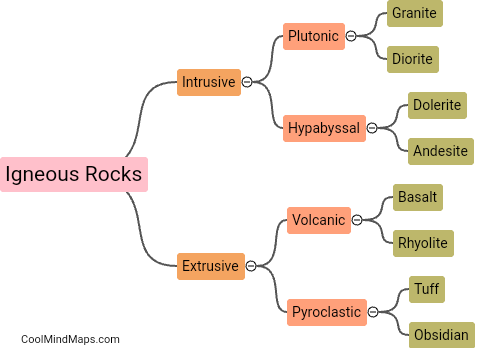What are the types of igneous rocks?
Igneous rocks are classified into two main types: intrusive and extrusive. Intrusive igneous rocks are formed below the earth's surface from the cooling and solidification of magma. These rocks have large crystals due to their slow cooling process. Examples of intrusive igneous rocks include granite, diorite, and gabbro. Extrusive igneous rocks are formed on the earth's surface from the cooling and solidification of lava. These rocks have small crystals or a glassy texture due to their rapid cooling process. Examples of extrusive igneous rocks include basalt, andesite, and obsidian.

This mind map was published on 19 February 2024 and has been viewed 93 times.











